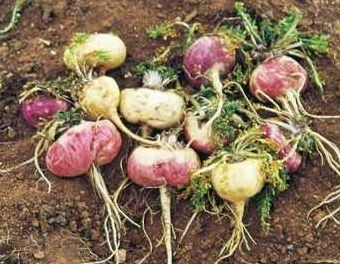Maca Root Benefits |
|
|
|
Darrell Miller | 09/17/14 |
Date:
September 17, 2014 05:25 PM
Author: Darrell Miller
(dm@vitanetonline.com)
Subject: Peruvian Maca
 What is a Maca Root?
What is a Maca Root?
Maca Root is one of the roots and tuber harvests of higher protein content. Until late years, this nutritious base of the Andes was little or nothing known for the lion's share of the individuals thereof, Peru (aside from the tenants of the Andes) and obviously overlooked by whatever is left of the world.
Maca (otherwise called Peruvian Maca or Maca Andina) has an astonishing quality to develop to remarkable statures: from 3800 to 4800 meters high in the most cold Andes mountains, where temperatures are amazing, from exceptional hotness morning to ice on the night, frigid winds, snow and persevering high power of daylight. In this antagonistic region, where there is little oxygen, there is uncommon vegetation develop just potatoes and maca sharp. There are no trees, no plants, just a couple of centimeters tall.
This tuber, irrelevant part of the tuberous root size and state of a typical radish, is effectively dried under the sun and keeps up its nutritious qualities, with elevated amounts of iron, for a few years stockpiling. It is brilliant nourishment and Incas additionally utilized it for its richness improving activity and its impact on sexual conduct.
A percentage of the elements that have been recognized: amino acids, proteins, vitamins, minerals, follow components and auxiliary metabolites.
Maca - History:
Anthropological confirmation has been found in the development of maca in Peru since 1600 BC. The Incas considered Maca as a blessing from the divine beings. They additionally develop maca as nourishment, Lamac - developed in the Andes utilized for religious services and custom moves. Spanish accounts report that amid the victory of Peru, creatures brought from Spain not play ordinarily as of right now, the locals cautioned the vanquishers who nourished their creatures with maca, with what they got the levels of typical generation.
Concerning the stretcher, Father Cobo, amid the pilgrim time, he said: "Maca develops in the most rough and frosty of the good countries where there are chances to develop any plant sustenance."
Maca - Morphology and plant science
Maca is a biennial plant statures conduct, being pollinated toward oneself, cleistogamous, with a five-month conceptive stage and with a blossom that keeps going two roots.
Maca Root: Roots have shades extending from light yellow to dark through the tan, purple, and so on with sizes of 3-6 cm. transverse measurement of 4-7 cm. longitudinal, in the same way as a radish (reversed cone). The root is first in the improvement of items. There is no true distinction in taste or substance organization as the color of the root.
Stem: Short, subtle, in the same way as a carrot or radish.
Leaves: rosette, made with flanges sheath, petiole length with the top leveled. Limbo compound, has a length of 6 to 9 cm; the basal and cauline pinnatifid are somewhat lessened.
Inflorescence: group compound and infrequently basic. The blooms structure bunches, are helper bisexual, actinomorphic, green light and little, white pre-flowering calyx and corolla with 4 free petals somewhat bent at the peak.
Soil grown foods: units somewhat amagrinado. With a solitary seed in each one cell, ovoid, yellowish-red, 1-2 mm. wide.
Maca – Cultivation
Cultivola Maca is developed fundamentally for its tuberous root is naturally known as hipocolito (eg radish, turnip). The maca plant has the astonishing quality to develop to unprecedented statures (from 3800 to 4800 meters) in the unfriendly Puna Peruvian where temperatures are great: the serious high temperature of the morning to the sub zero frost of the night.


